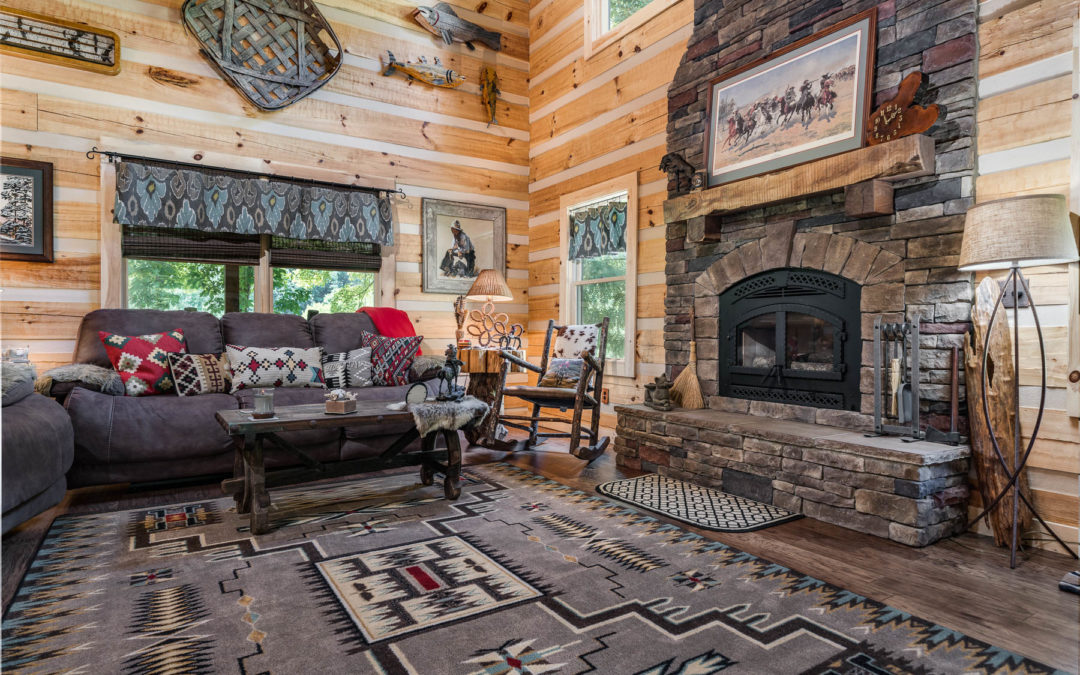Energy Savings and Resource Conservation in Log and Timber Homes
by Log and Timber Homes Council
Adopting a “green” philosophy is easier than you think and it does not require wind turbines, solar panels or wearing extra sweaters in January. Here are 10 conventional, easy to implement suggestions from the Log Homes Council on ways to reduce energy costs, increase comfort and make your log home a little greener.
Passive Solar
Situate the home to take advantage of the sun. In colder climates, a southern exposure for the family room and kitchen is idea. Rely on existing trees to lower energy costs. When clearing the site for construction, maintain fir trees as a barrier along the cold and windier north and west elevations. Plant or preserve existing deciduous trees along the south and east elevations. The leaves will provide shade in summer and in the winter; the bare trees will let in plenty of sunlight and warmth.
Energy Star
ENERGY STAR© is a government-backed program helping businesses and consumers protect the environment through greater energy efficiency. Look for the Energy Star label and rating on products you buy for your home. The distinctive yellow label gives consumers guidelines for a wide range of components and savings can be significant. When compared to single pane windows, Energy Star rated low-e glass with solar shading, cut energy bills by $110 to $400 while increasing comfort, protecting furniture from sun damage and reducing condensation.
The Kitchen
Again, ENERGY STAR rated appliances such as refrigerators; dishwashers and vent fans incorporate advanced technologies that use 10% to 50% less energy and water than standard models — more than making up for the slightly higher costs of these products. Tip – old refrigerators are energy hogs; so keeping that extra fridge to occasionally store beverages and extra food is wasteful.
Lighting
Compact Fluorescents cut energy by 70 percent. Wherever possible install fluorescent fixtures and switch lamps to compact fluorescent bulbs. These bulbs have been improved in terms of ambient color, but if you still have trouble getting used compact fluorescents, start with utility areas such as the laundry and basement. Combine compact fluorescents with incandescents in bedrooms and living areas. In addition, automatic lighting controls, ranging from outdoor light fixtures with built-in photo sensors to motion detectors to whole-house programmable controls eliminate waste.
Heat Pump Systems
For climates with moderate heating and cooling needs, heat pumps offer an energy-efficient alternative to furnaces and air conditioners. During the heating season, heat pumps take advantage of the outdoor “heat” and move it into the
home. During warm weather, the process is reversed. Because they move rather than generate heat, heat pumps can deliver up to four times the amount of energy they consume. In moderate climates, air source heat pumps use the ambient air. In severe climates, geo-thermal heat pumps, which are more costly, take advantage of the heat below the ground, which remains above 50 degrees.
Hot Water
Consider an on-demand heating system that eliminates having to keep an 80 or so gallon tank of water warm around the clock. In addition to natural gas or propane, units that have to be vented or installed on an outside wall, on demand hot water heating systems are available in electric models that can be installed anywhere. Additionally, solar water heating can be considered.
Indoor Air Quality
Consider incorporating a HEPA filter to the heating system. A HEPA (High- Efficiency Particulate Air) filtration system, removes up to 99.97% of small particles – pollutants that standard disposable filters simply do not touch.
Ceiling Fans
Ceiling fan and light units circulate warm air in the winter and make occupants feel cooler in the summer. Look for ENERGY STAR rated models, as they are 50 percent more efficient than conventional units. This saves $15-$20 per year on utility bills to say nothing of the air conditioning and heating savings gained. Tip: In the summer, use the ceiling fan in the counter-clockwise direction to create a wind-chill effect. In the winter, reverse the motor and operate the fan at low speed in the clockwise direction to produce a gentle updraft, which forces warm air near the ceiling down into the occupied space.




